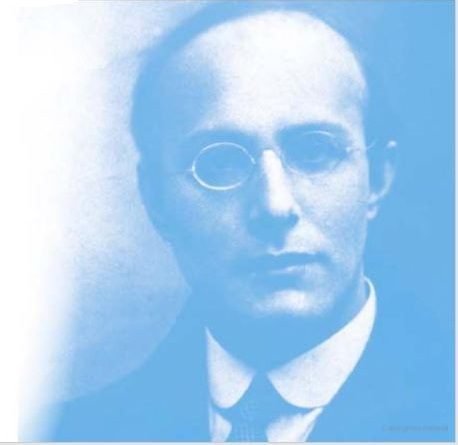In 1906, a German distinguished (somewhat neglected) economist and sociologist Werner Sombart published Why is there no Socialism in the United States? – a book which will become a famous work on American exceptionalism to this day (along with a pioneering and penetrative Democracy in America, by Alexis de Tocqueville). There are a number of reasons given by Sombart for the weakness of Socialism in the US: the lack of a feudal heritage in the American short history; unlike the European nations that retained numerous remnants of traditional attitudes and institutions, the U.S. was almost completely dominated by the spirit of competition, material acquisitiveness and individualistic culture; and a favorable attitude toward capitalism held by workers in America.
Sombart also made two additional points regarding the failure of expansion and reception of socialist ideas and the lack of radical political consciousness. Sombart argued that the worker in America had a high esteem for the American system of democratic government and his own participation in it. A second, more practical explanation concerned the tremendous power and stability of the two-party political system. A key factor was seen to be the ability of the major parties to control financial resources and political “spoils,” and thus attract members while co-opting leaders of potential opposition movements.
In this respect, Barry Eidlin (McGill University) follows Sombart’s analysis and proficiently elaborates more focused questions: Why is there no labor party in the United States? Why independent left third parties – parties with a programmatic commitment to socialism or another ideology emphasized collective and redistributive policies – did not take electoral root and political hold in the US?
In a very interesting paper (open access) recently published in American Sociological Review, Eidlin scrutinizes these profound questions that has had deep implications for the U.S. politics, social policy and political economy, using Canada as a comparative case. The paper claims that underlying social structures, political culture and institutions did not affect labor party support as expected: support was similar in both countries prior to the 1930s (prior to World War I, the support was even higher in the United States than in Canada), then diverged. Why?
 To explain this, Eidlin – based on newly compiled archival electoral data – proposes a modified “articulation” model of parties, emphasizing parties’ role in assembling and naturalizing political coalitions within structural constraints; an explanation which enhances Sombart’s argument. The Great Depression sparked labor and agrarian militancy in the United States and Canada. In both cases, ruling party responses to the unrests during the Great Depression determined which among a range of possible political alliances actually emerged. In the United States, Franklin D. Roosevelt and the Democrats adopted a co-optive political strategy and used the severe crisis to mobilize new constituencies. Rhetorical appeals to the “forgotten man” and various policy reforms in industry (including the most-important Wagner Act) and agriculture absorbed some farmer and labor groups into the New Deal coalition, and divided and excluded others, undermining labor party support. In contrast, in Canada, mainstream parties pursued a coercive approach and excluded farmer and labor constituencies, leaving room for the Cooperative Commonwealth Federation (CCF), the Canadian New Democratic Party precursor, to organize them into a third-party coalition.
To explain this, Eidlin – based on newly compiled archival electoral data – proposes a modified “articulation” model of parties, emphasizing parties’ role in assembling and naturalizing political coalitions within structural constraints; an explanation which enhances Sombart’s argument. The Great Depression sparked labor and agrarian militancy in the United States and Canada. In both cases, ruling party responses to the unrests during the Great Depression determined which among a range of possible political alliances actually emerged. In the United States, Franklin D. Roosevelt and the Democrats adopted a co-optive political strategy and used the severe crisis to mobilize new constituencies. Rhetorical appeals to the “forgotten man” and various policy reforms in industry (including the most-important Wagner Act) and agriculture absorbed some farmer and labor groups into the New Deal coalition, and divided and excluded others, undermining labor party support. In contrast, in Canada, mainstream parties pursued a coercive approach and excluded farmer and labor constituencies, leaving room for the Cooperative Commonwealth Federation (CCF), the Canadian New Democratic Party precursor, to organize them into a third-party coalition.
Eidlin stresses that understanding the distinctive characteristics of the New Deal coalition is essential to understanding its implications for postwar politics. Instead of leading to more expansive European-style social democracy, labor’s incorporation into the US Democratic Party decisively blocked the possibility of a more social democratic postwar settlement, as it drew labor away from class-based negotiation toward interest-group bargaining.
This illuminating research demonstrates that integrating a more autonomous conception of parties into political economy and applying a comparative approach can better explain institutional change and variation. Because not only do parties forge and reshape political coalitions, but parties’ actions and attributes can lend very different characteristics to the resulting coalitions, their policies and politics.
Eidlin, Barry. 2016. “Why Is There No Labor Party in the United States? Political Articulation and the Canadian Comparison, 1932-1948”. American Sociological Review 81(3): 488–516.

***
Join the Economic Sociology and Political Economy community through
Facebook / Twitter / LinkedIn / Google+ / Instagram / Reddit / Tumblr

[…] Komlik has a food for thought post on economicsociology.org. These are some questions worth asking. How certain countries end up […]